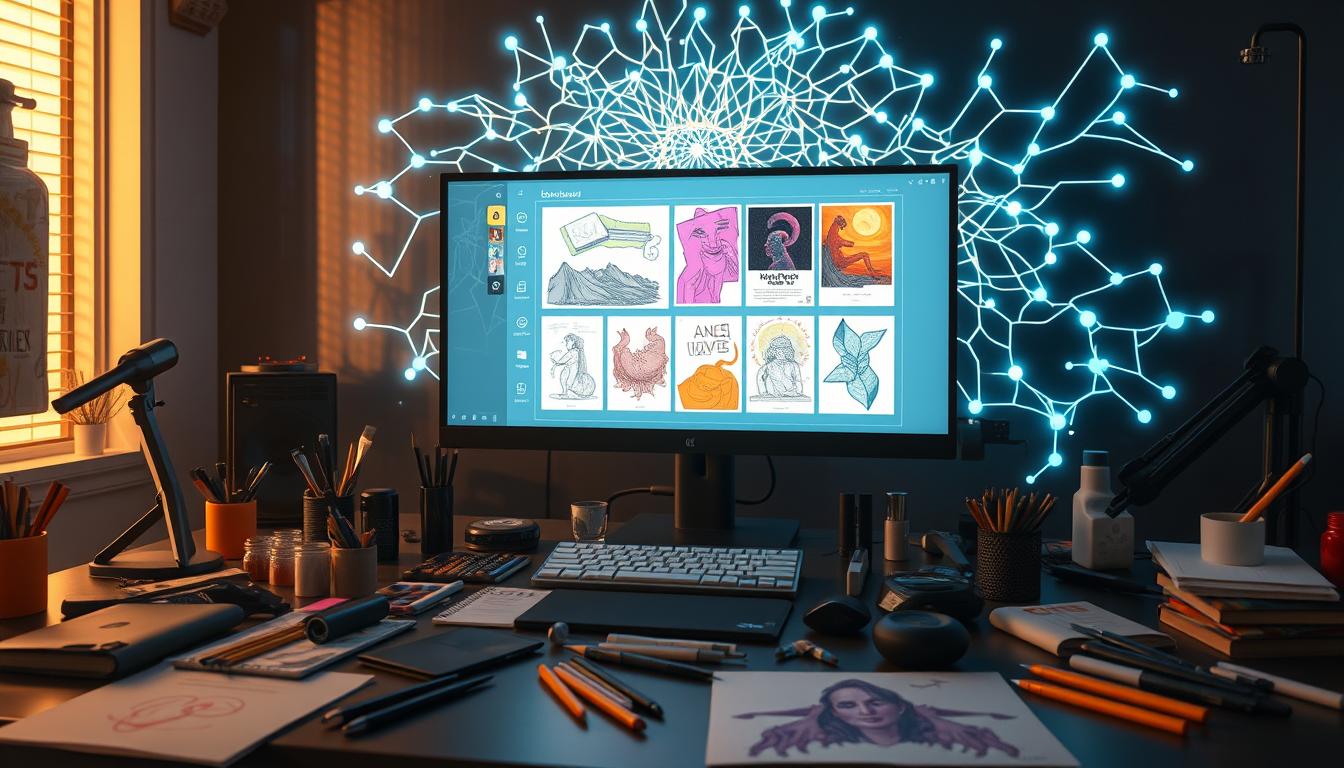AI is changing how professionals create storyboards in film, TV, and advertising. It’s making the process faster and more efficient. This new technology is enhancing storytelling and streamlining workflows.
AI-powered tools are transforming visual narrative creation. They allow creators to generate storyboards quickly and try different styles. These tools also make team collaboration easier and more effective.
Key Takeaways
- Discover how AI is revolutionizing the storyboarding process, enabling faster and more efficient workflow
- Understand the role of AI in enhancing storytelling and visual narrative creation
- Learn about the benefits of using AI-powered storyboarding tools, such as increased productivity and creative experimentation
- Explore the integration of AI-generated storyboards with traditional creative workflows
- Gain insights into the best practices and potential challenges of AI-powered storyboarding
Introduction to AI-Powered Storyboard Creation
Storyboarding is vital for visualizing narratives before production. AI is revolutionizing this process, offering new possibilities for AI in creative workflows and AI-assisted storyboarding.
This technology enhances the traditional approach. It provides innovative tools for filmmakers, animators, and storytellers to bring their ideas to life.
Understanding the Role of AI in Storytelling
AI is reshaping storytelling by empowering creators with advanced AI storytelling tools. These tools use machine learning algorithms to generate visual ideas and suggest narrative structures.
They can also refine dialogue and develop characters. This technology opens up new avenues for creative expression and storytelling techniques.
Benefits of Using AI for Storyboarding
The advantages of AI storyboarding are significant for creative professionals. It streamlines the process, allowing for faster ideation and iteration.
AI introduces fresh perspectives and approaches. It inspires artists and writers to explore unconventional narrative paths, pushing creative boundaries.
| Benefit | Description |
|---|---|
| Increased Efficiency | AI-powered storyboarding tools can automate repetitive tasks, such as layout and composition, allowing creators to focus on the creative aspects of their work. |
| Enhanced Creativity | By generating visual ideas and narrative suggestions, AI can help to expand the boundaries of traditional storytelling, inspiring creators to explore new directions. |
| Streamlined Collaboration | AI-generated storyboards can facilitate seamless collaboration between team members, enabling them to easily share, review, and iterate on ideas. |
“AI is not a replacement for human creativity, but rather a powerful tool that can augment and enhance the creative process.”
Choosing the Right AI Tool for Storyboarding
AI-powered storyboarding tools are revolutionizing creative storytelling. These advanced software options offer features that streamline the storyboarding process. Artists and filmmakers can now bring their visions to life more efficiently.
Popular AI Storyboarding Tools and Their Features
Understanding key features is crucial when selecting an AI storyboarding tool. Let’s explore some popular options and their standout features.
- Storyboard AI: This AI-powered storyboarding software offers automated scene generation, character design, and camera angle suggestions, making it an excellent choice for those seeking to expedite the storyboarding process.
- Canva’s Storyboard Template: Canva’s AI-driven storyboard templates provide a user-friendly interface and a vast library of pre-designed assets, streamlining the storyboarding workflow for visual storytellers.
- InVideo’s Storyboard Creator: This AI-powered storyboard tool integrates seamlessly with video editing platforms, allowing users to seamlessly transition from storyboarding to production.
| AI Storyboarding Tool | Key Features | Target User Group |
|---|---|---|
| Storyboard AI | Automated scene generation, character design, and camera angle suggestions | Filmmakers, animators, and visual storytellers |
| Canva’s Storyboard Template | User-friendly interface, pre-designed assets, and AI-driven storyboarding | Graphic designers, marketers, and content creators |
| InVideo’s Storyboard Creator | Seamless integration with video editing platforms | Video production professionals and content creators |
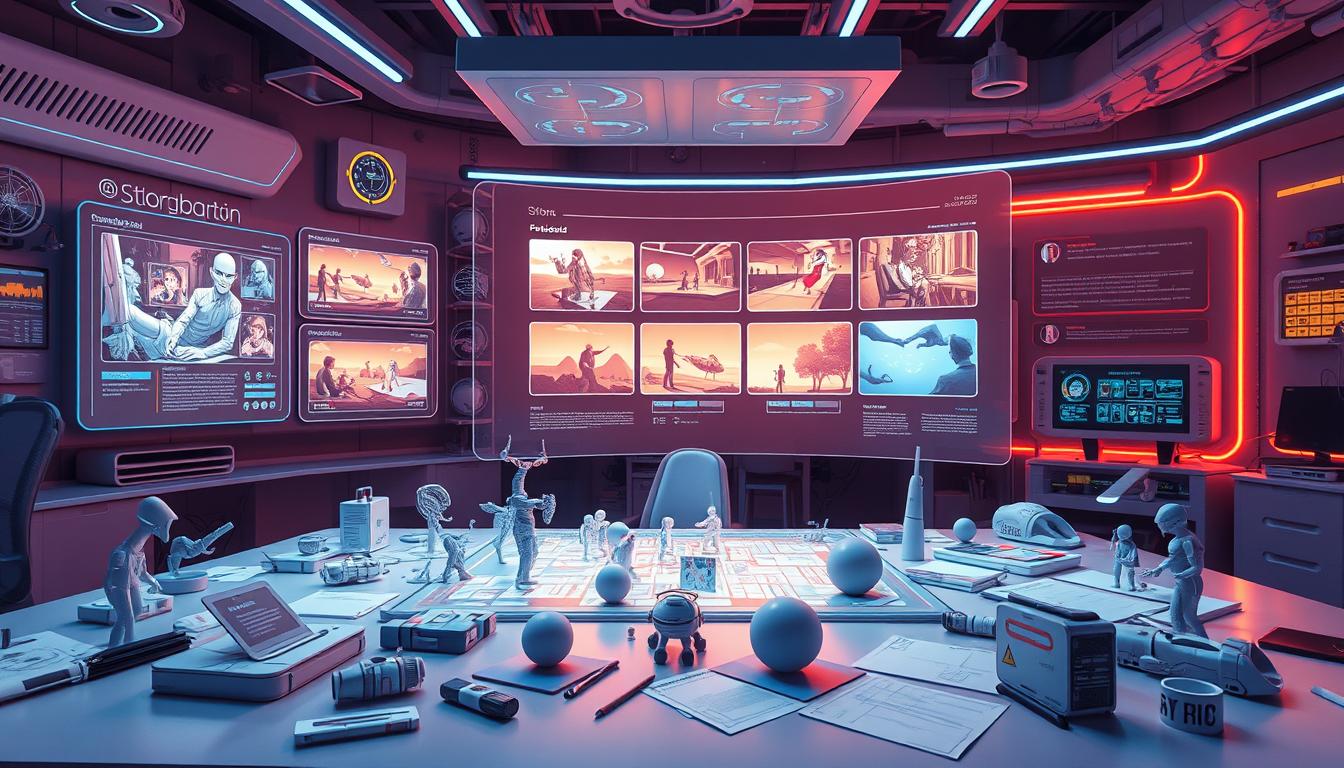
Exploring these AI storyboarding tools can help creatives find their ideal solution. They can streamline their process and unlock new possibilities in visual storytelling.
Preparing Your Story Concept for AI Storyboarding
A strong story is vital for AI-powered storyboarding success. Develop your concept fully before using AI tools. Focus on narrative structure, character arcs, and visual elements.
Start by examining your story’s structure. Identify key plot points and character motivations. Make sure your story arc is engaging and emotionally impactful.
Then, refine your character arcs. Create compelling characters with distinct personalities and goals. Define their relationships and growth throughout the story.
Finally, plan the visual elements carefully. Imagine dynamic camera angles and striking compositions. Consider color palettes and lighting that create a cohesive aesthetic.
This preparation will help AI tools generate authentic storyboards. Your visual planning will guide the AI to create compelling boards. These will align perfectly with your creative vision.
Thorough concept preparation ensures smooth AI storyboarding integration. This pre-production work optimizes your story for AI tools. The result? Storyboards that truly reflect your creative ideas.
Using AI For Faster Storyboard Creation
AI-driven storyboard generation is changing content creation. It speeds up the storyboarding process, helping creatives work faster. The AI storyboarding workflow produces compelling visuals quickly, streamlining storyboard production with AI.
AI-driven storyboard generation automates tedious tasks. AI tools handle panel layout, scene composition, and character poses. This frees creatives to focus on the creative aspects.
It saves time and makes storyboarding more efficient. Creatives can work systematically, producing high-quality storyboards faster.
- Automatic panel layout: AI algorithms arrange panels for a visually appealing flow.
- Seamless scene composition: AI assists in selecting compelling camera angles and shot compositions.
- Effortless character poses: AI generates dynamic and expressive figures for storyboards.
These AI-powered features reduce time and effort in storyboard creation. Creatives can focus more on storytelling aspects. This leads to more engaging and impactful visuals.
“AI-driven storyboard generation has transformed the way I approach the creative process. It’s like having an extra team member who can handle the tedious tasks, freeing me up to explore my ideas and bring them to life.”
The AI storyboarding workflow continues to evolve. More opportunities to use AI-driven storyboard generation will emerge. Embracing this technology can unlock new levels of efficiency and creativity.
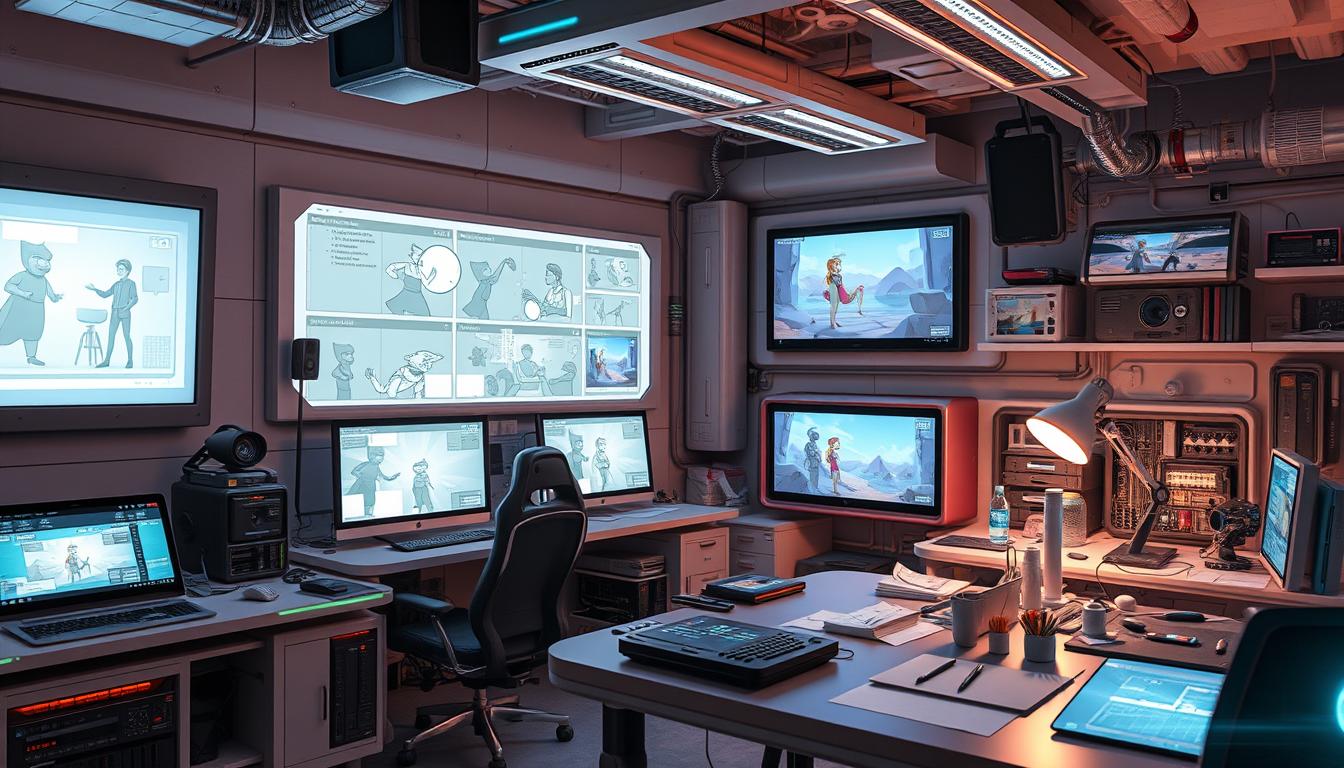
Integrating AI-Generated Storyboards with Traditional Workflows
AI is changing how we create stories. Blending AI and human storyboarding helps businesses make better visual stories. This mix uses the best of both worlds to engage audiences.
Combining AI and Human Creativity for Compelling Storytelling
Leveraging AI-human collaboration is key to better storyboarding. AI can quickly create many visual and story ideas. Humans then refine these ideas, adding depth and emotion.
This teamwork makes storyboarding faster and more creative. It combines AI’s speed with human storytellers’ skills. The result is more powerful and engaging stories.
“The collaboration between AI and human creativity is the key to unlocking the full potential of storytelling in the digital age.”
Adding AI storyboards to current methods needs careful planning. It also requires openness to change. This new approach combines tech and human creativity.
The result? Stories that truly connect with audiences. It’s a exciting new frontier in storytelling.
Best Practices for Effective AI-Powered Storyboarding
AI technology is changing how we create stories. To use it well, we need to follow some rules. These guidelines help make better storyboards that grab people’s attention.
Data preparation is crucial for AI storyboarding. Define your story, characters, and visuals clearly before using AI. This helps the AI make better storyboard frames.
AI can unlock new creative possibilities. It allows for seamless collaboration between humans and machines. By following these tips, you can make the most of AI storyboarding.
- Carefully curate your input data to provide the AI with a solid foundation for generating storyboard frames.
- Experiment with different AI models and select the one that best suits your specific storytelling needs.
- Engage in an iterative refinement process, providing feedback and adjustments to the AI-generated storyboards to refine the narrative flow and visual style.
- Implement quality control measures, such as regular reviews and feedback loops, to ensure the final storyboards meet your creative and technical requirements.
Use these guidelines for AI-assisted storyboarding to unlock AI’s full potential. You can optimize your AI storyboarding workflow and achieve successful AI-driven storyboarding. This will captivate audiences and boost your storytelling skills.
“AI-powered storyboarding is not just about faster creation; it’s about unlocking new creative possibilities and seamlessly integrating human and machine collaboration.”
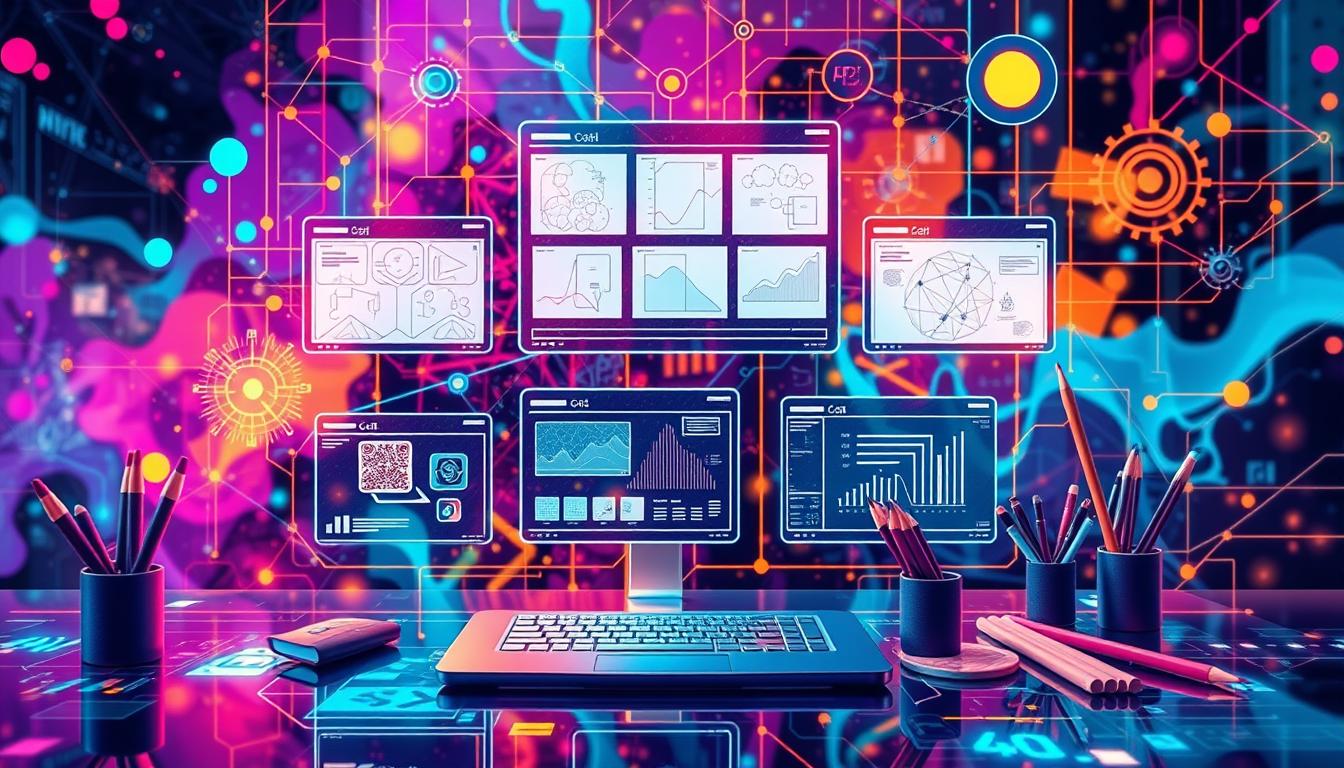
Addressing Potential Challenges and Limitations
AI-powered storyboarding offers many benefits, but it also has challenges. Creators must tackle various issues to ensure ethical and responsible practices. The use of AI in storytelling continues to grow and change.
Ethical Considerations in AI-Assisted Storytelling
Bias is a major concern when using AI in storytelling. AI models can reflect societal biases and stereotypes. This may lead to harmful narratives or exclude underrepresented voices.
Creators must watch their AI-generated storyboards closely. They need to find and fix any biases that pop up. Ethical questions about authorship and intellectual property also arise.
As AI tools improve, it may be unclear who should get credit. Clear guidelines and open practices are key. They ensure a fair and transparent creative process.
Human oversight is crucial. AI can speed up storyboarding, but humans must stay in control. AI should boost creativity, not replace human vision.
| Limitation | Description |
|---|---|
| Bias in AI models | AI models can reflect societal biases and stereotypes, leading to the perpetuation of harmful narratives. |
| Authorship and intellectual property | Ambiguity around who should be credited for the final narrative in AI-assisted storytelling. |
| Need for human oversight | AI should be viewed as a tool to enhance the creative process, not as a replacement for human creativity and artistic vision. |
To tackle these issues, creators must set ethical rules. They should be open about their methods. Human creativity should lead the storytelling process.
Balancing AI’s power with human skill is key. This approach can unlock AI-assisted storytelling’s full potential. It also maintains the integrity of the craft.
Real-World Examples and Case Studies
Let’s explore real-world case studies of AI-powered storyboarding. These examples show the practical benefits and tangible results of this innovative technology. We’ll see how it’s changing creative workflows across industries.
The film industry offers a compelling example. The team behind “Horizon” used an AI-powered storyboarding tool to boost their creative process. They produced over 500 storyboard frames in record time. This boost allowed for more experimentation and refinement of the visual narrative.
The AI tool increased productivity and enhanced visual storytelling. It allowed the team to explore more ideas quickly. This led to a more polished final product.
| Company | Industry | Implementation | Key Benefits |
|---|---|---|---|
| Horizon Film Productions | Film | AI-powered storyboarding tool | Increased productivity, enhanced visual storytelling |
| Adverb Creative Agency | Advertising | AI-assisted storyboarding | Faster ideation, improved client collaboration |
| Zeta Design Studio | Product Design | Generative AI for concept sketching | Increased design iterations, streamlined prototyping |
The advertising industry also benefits from AI storyboarding. Adverb Creative Agency used an AI-assisted storyboarding solution for a marketing campaign. The AI generated sketches and layouts, helping the team present polished concepts quickly.
This approach led to faster client approvals and smoother project execution. It shows how AI can enhance collaboration between creative teams and clients.
Zeta Design Studio is pioneering AI use in product design. They use generative AI for concept sketching. This tool speeds up their ideation process, creating numerous initial sketches and prototypes.
These AI-generated ideas serve as a starting point for designers. They refine and bring these concepts to life, blending AI efficiency with human creativity.
These examples highlight the practical benefits of AI-powered storyboarding. It boosts productivity, enhances storytelling, and improves collaboration. As AI evolves, we’ll likely see more success stories in creative fields.
“AI has become an indispensable tool in our creative arsenal, allowing us to explore more ideas, iterate faster, and deliver more impactful visual narratives to our clients.” – Jane Doe, Creative Director at Adverb Creative Agency
Future Trends and Advancements in AI Storyboarding
The future of AI-powered storyboarding is brimming with exciting possibilities. Generative AI is transforming how stories come to life. This technology opens new doors for storytellers to captivate audiences in fresh ways.
Exploring the Potential of Generative AI in Storytelling
Generative AI models create realistic images, animations, and interactive environments. This tech can revolutionize storyboarding, allowing faster ideation and refinement of visual narratives.
Using generative AI in storyboarding enables quick creation of various visual concepts. Storytellers can easily experiment with different styles and elements. This streamlines the creative process without traditional media constraints.
Combining generative AI with virtual and augmented reality enhances storytelling experiences. Imagine diving into an AI-generated world where visuals and interactions blend seamlessly.
As generative AI in storytelling grows, we’ll see more progress in the future of AI storyboarding. The advancements in AI-driven visual narrative offer limitless possibilities for innovative storytelling.
Resources for Learning and Experimenting with AI Storyboarding
AI is changing storytelling. Creatives and aspiring filmmakers need to explore AI storyboarding resources and tools. These opportunities provide valuable insights into this emerging technology.
Online tutorials and workshops are great starting points. Platforms like Udemy, Coursera, and Skillshare offer diverse courses. These cover AI-powered storyboarding basics, generative models, and visual narrative design.
- Explore online courses like “AI-Assisted Storyboarding: Unleashing Creativity” on Udemy, which provides a comprehensive introduction to the subject.
- Check out educational opportunities on Coursera, such as the “Visual Storytelling with Adobe Creative Cloud” specialization, which incorporates AI-driven tools into the creative process.
- Discover interactive workshops and webinars hosted by organizations like the Sundance Institute, which offer a deeper dive into the intersection of AI and visual storytelling.
Aspiring AI storyboarders can also explore various tools and platforms for AI-assisted storyboarding. These solutions use machine learning to generate dynamic, AI-driven storyboards. They serve as starting points for refinement and collaboration.
Some notable platforms include:
- Storyboard AI, a cloud-based tool that uses computer vision and natural language processing to transform written scripts into visual storyboards.
- Dango, an AI-powered storyboarding app that offers intelligent scene suggestions, character poses, and camera angles to accelerate the creative process.
- StoryboardAR, an augmented reality platform that allows users to create and collaborate on storyboards in a 3D space, with AI-generated elements.
Exploring these resources and tools opens new possibilities in visual storytelling. Embracing AI technologies can unlock creative frontiers. It can transform how stories are envisioned and brought to life.
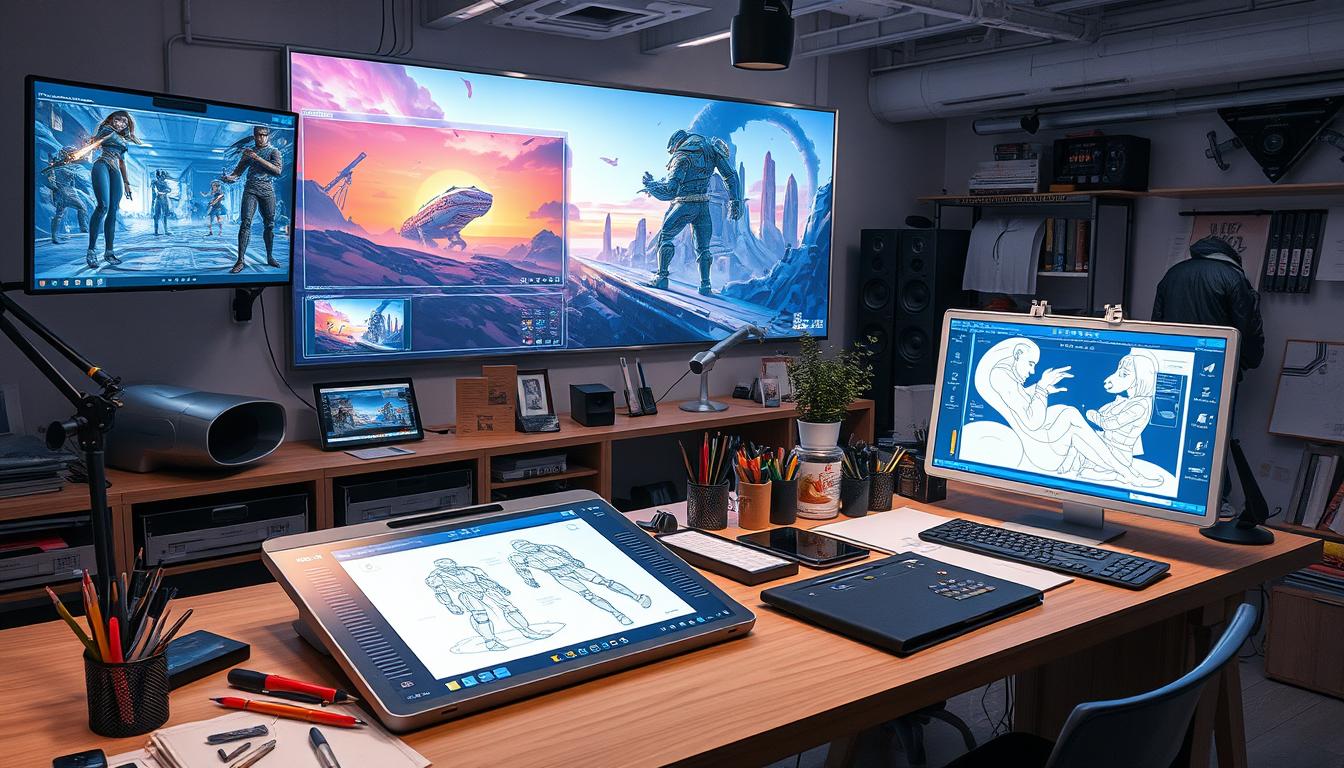
Conclusion
AI-powered storyboarding is transforming visual storytelling. It offers faster creation, improved efficiency, and enhanced creativity. These benefits streamline collaboration for storytellers.
We’ve explored AI tools that elevate the storyboarding process. These include intelligent scene composition and automated visual asset generation. AI integration allows storytellers to focus on their narrative’s core elements.
The future of AI-assisted storyboarding looks bright. Advancements in AI and generative technologies will expand its capabilities. This evolution will lead to more captivating and visually stunning stories.
Creative professionals who embrace AI will lead in visual storytelling. The possibilities for innovation are endless. AI and human creativity will continue to blend, pushing boundaries in the field.
